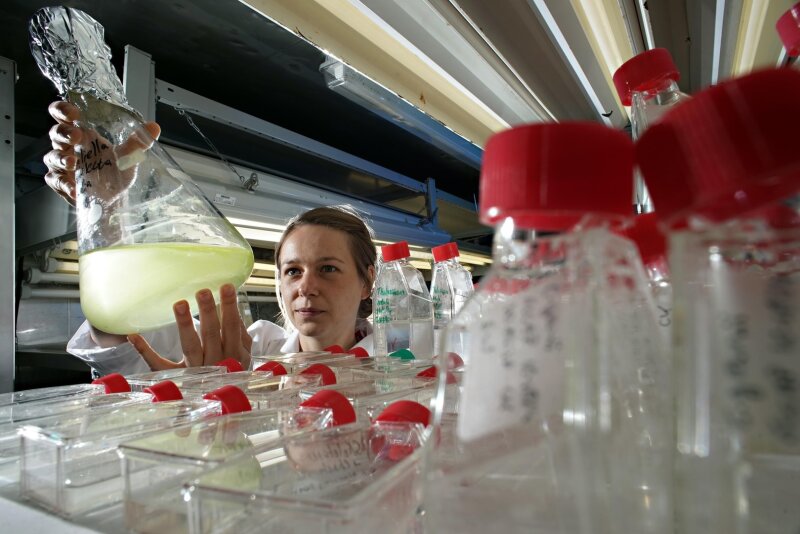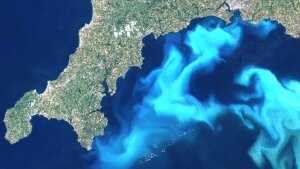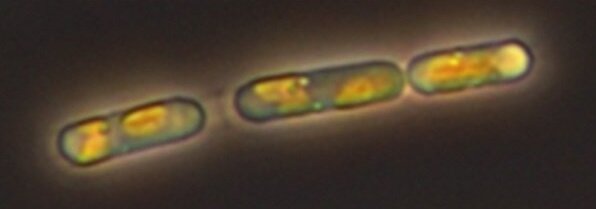Chemically Mediated Interactions in the Plankton
The often unicellular organisms of the plankton live in a seemingly homogeneous environment. The spatial and temporal variability of the plankton is highly complex and governs processes like annual mass occurrences (blooms) of key players that dominate large oceanic patches as well as the short-term formation of micro assemblages. The cell density is comparably low, but algal primary production in the plankton sums up to nearly half of the global photosynthesis.
Im Sonderforschungsbereich „ChemBioSys“, der nun in die nächste Förderphase geht, erforschen Jenaer Wissenschaftler fundamentale Kontrollmechanismen in komplexen Biosystemen, die unser tägliches Leben beeinflussen. Doktorandin Arite Bigalke überprüft hier Algenkulturen.
Image: Jan-Peter Kasper (University of Jena)Algae in the plankton can be visualized in satellite pictures like this bloom of the unicellular Emiliania huxleyi in the British Channel…
Image: Algae in the plankton can be visualized in satellite pictures like this bloom of the unicellular Emiliania huxleyi in the British Channel…Numerous interactions within the plankton are controlled by chemical signals. We address this regulation combining methods and concepts from chemistry, microbiology and ecology.
A key to success in these projects is the work with the organisms in experiments allowing to monitor performance in ecological interaction situations. We rely on co-culturing methods for simple investigations of interactions and expand the approach to work in plankton enclosures (mesocosms). Experiments with natural communities in the open oceans during research cruises or field stays round up the concept and provide the ultimate proof for the validity of the lab generated hypotheses.
Projects within this research focus include
- the investigation of polar zwitterionic metabolites produced and released by algae in amounts sufficient to influence global climate processes. Thume et al. Nature 2018https://www.nature.com/articles/s41586-018-0675-0
- the control of algal blooms by bacterial infections https://academic.oup.com/femsre/article/41/6/880/4091024
- the elucidation of mechanisms of viral infection of phytoplankton blooms. Here infection processes of the globally important alga Emiliania huxleyi are monitored using ecological, metabolomic and proteomic methods. Rosenwasser et al. Plant Cell http://www.plantcell.org/content/26/6/2689External link
See our publications for more information


